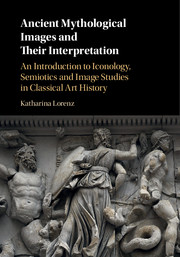 Ancient Mythological Images and their Interpretation
Ancient Mythological Images and their Interpretation The experiment: methods – images – objects
Published online by Cambridge University Press: 05 August 2016
Summary
For this reason it is not only art theory that should have an interest in the continuing development of factual research (without which its terms, to use Kantian terminology, would be ‘empty’), but empirical research on factual matters also has an interest in the prejudice-free development of art theory (without which its observations would be ‘blind’); and in the end both have to come together to work collaboratively, ideally within the same person.
Panofsky 2008: 66Now we must always, when we find an answer, revisit the question that gave issue to it. We must never be satisfied with answers. Art historians who glibly dismiss ‘theory’ are actually dismissing, or rather expressing their dread of, the strange fact that questions can outlive answers.
Didi-Huberman 2005: 33This book is an experiment. It places under the microscope the methods we employ to analyse mythological pictures, and also pictures more generally, and, in turn, the range of understandings that we can gain by different modes of analysis. The discussion starts where other discussions of ancient mythological imagery have ended. The central objective is broadly diagnostic, for this study is concerned not with what we can find out about Greek and Roman cultures by analysing their mythological imagery, but with how we approach their imagery and in what ways this how determines what we can find out about the cultures that produced these pictures.
The book stems from the notion that there is not one single way – the right way – of analysing and interpreting pictures. Its approach is driven by the assumption that analysing and interpreting pictures, and specifically ancient mythological imagery, is all about our stretching these objects out methodically, turning and twisting them so as to elicit historical knowledge while fully aware of what we are doing, for we must not break the wondrous material we are manipulating.
This book addresses these concerns by examining the relationship between primary evidence, analytical methodologies, and scholarly practice, using the example of Greek and Roman mythological imagery.
- Type
- Chapter
- Information
- Ancient Mythological Images and their InterpretationAn Introduction to Iconology, Semiotics and Image Studies in Classical Art History, pp. 1 - 16Publisher: Cambridge University PressPrint publication year: 2016


